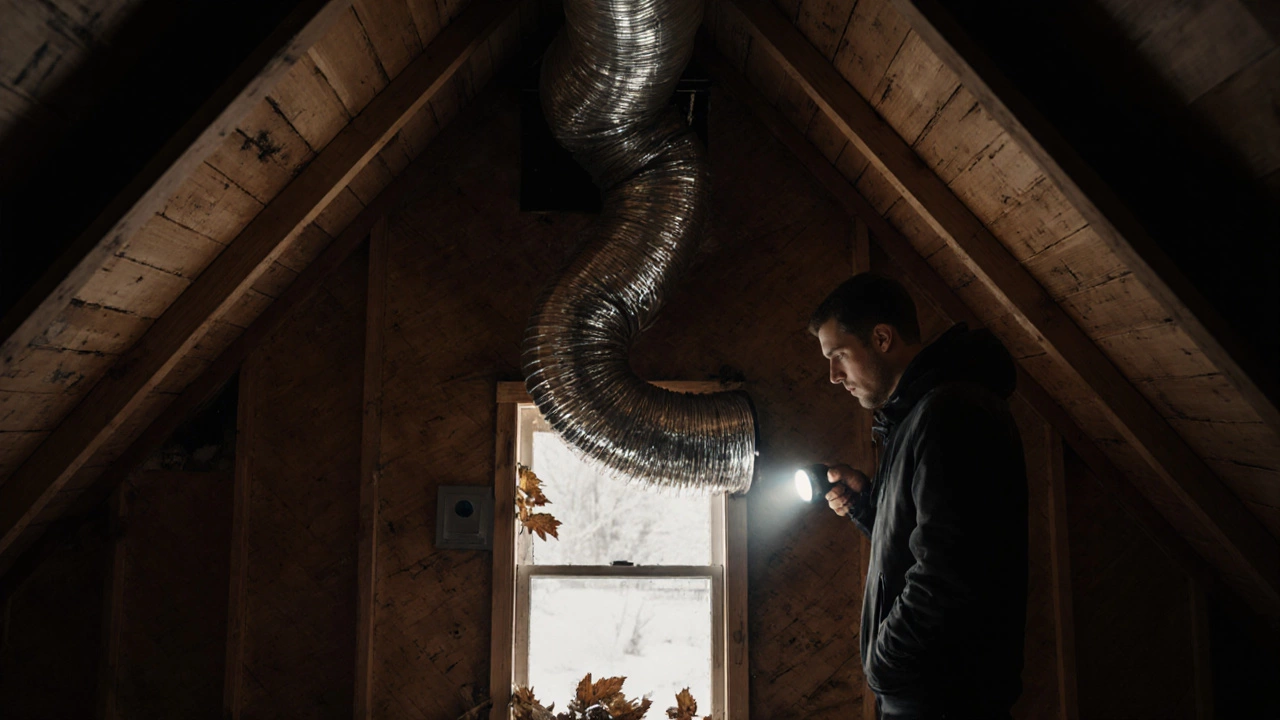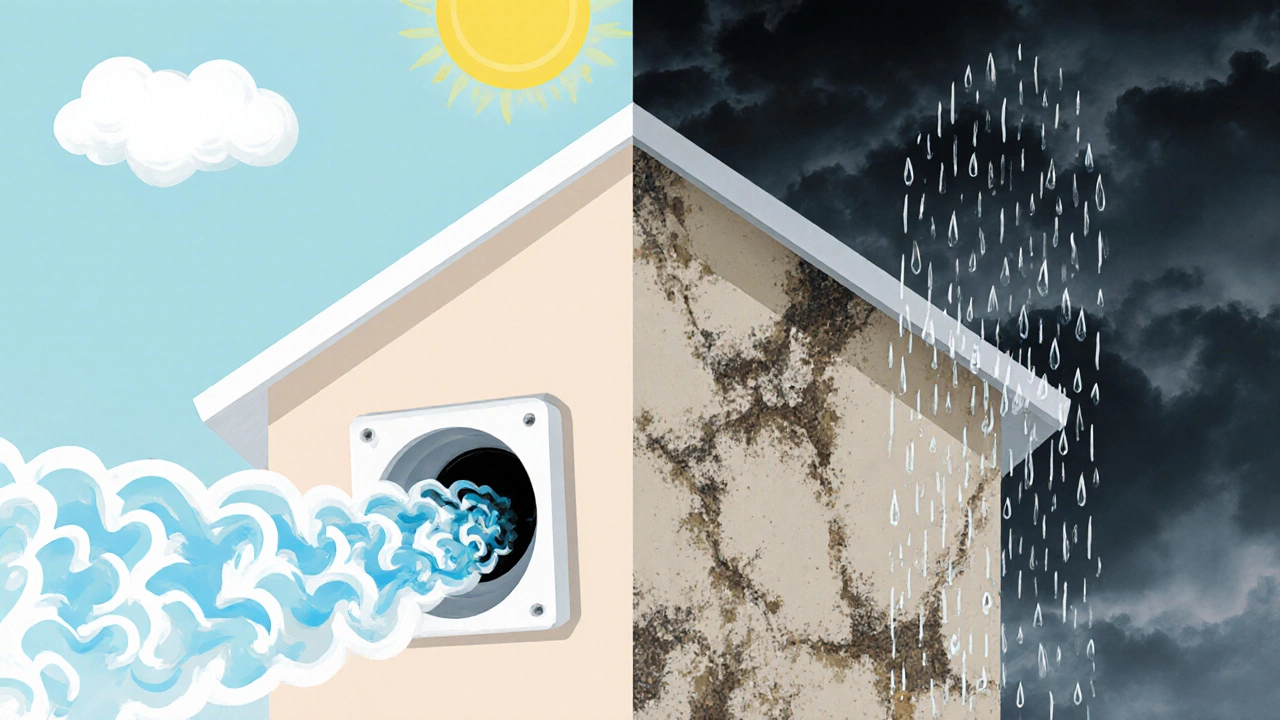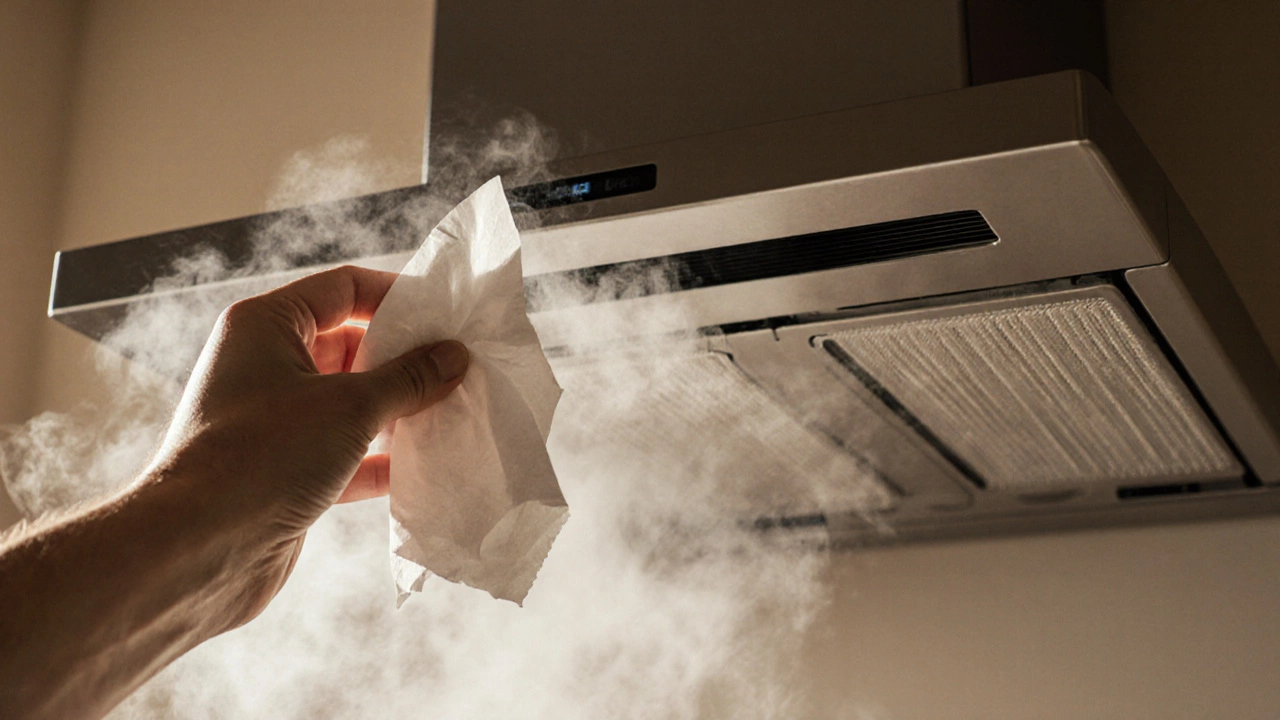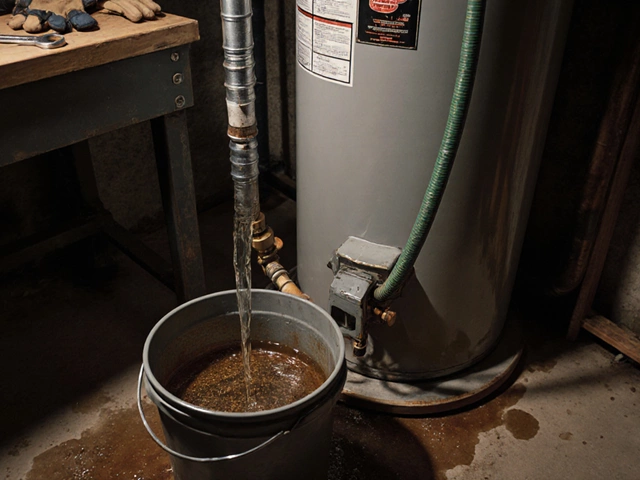Extractor Fan Airflow Calculator
Extractor Fan Performance Check
This tool helps determine if your extractor fan meets minimum airflow requirements. Based on standards from the article: Kitchen fans need at least 80 CFM, bathroom fans need at least 50 CFM.
Airflow Assessment
If your extractor fan is making noise but not pulling air, or if your kitchen still smells like last night’s fried fish, it’s not just in your head - the fan probably isn’t working right. Extractor fans in kitchens and bathrooms are meant to remove moisture, smoke, and odors. When they fail, you get mold, mildew, and stale air. Checking if it’s working isn’t hard, but most people skip the basics and jump straight to replacing it. Here’s how to test it properly - no tools needed, and you can do it in under five minutes.
Listen for the motor
Turn the fan on. If you hear a hum, buzz, or whirring sound, the motor is getting power. That’s good. But if you hear nothing at all - no click, no buzz, no movement - the problem could be the switch, the wiring, or a dead motor. Some fans have a delay when turned on, especially older models. Wait 10 seconds. If it’s still silent, move to the next step.Feel the airflow
Stand directly under or in front of the fan while it’s running. Hold your hand about 6 inches away. You should feel a steady pull of air. If the air feels weak, uneven, or warm instead of moving, the fan isn’t pulling air properly. You can also hold a piece of tissue paper or a light napkin near the grill. If it sticks to the grille and stays there, the fan is pulling air. If it flutters or falls, airflow is too low.Check the ducting
A clogged or crushed duct is the #1 reason extractor fans seem broken. Even if the motor spins, blocked ducting stops air from escaping. Go to your attic, crawl space, or outside vent. Look for:- Flaps that don’t open when the fan runs
- Leaves, nests, or debris blocking the outside outlet
- Crushed or kinked flexible ducts
- Condensation pooling inside the duct
Test the timer or humidity sensor
Many modern extractor fans have timers or humidity sensors. If your fan turns off after 10 minutes, that’s normal. But if it doesn’t turn on at all when the bathroom gets steamy, the sensor might be dirty or faulty. Wipe the sensor with a dry cloth. If it’s a timer model, try turning it on manually. If it works manually but not automatically, the sensor or timer module needs replacing.
Check the belt and blades (if accessible)
Some older or high-end extractor fans use belts to drive the motor. If the belt is loose, cracked, or broken, the fan won’t spin even if the motor runs. Turn off the power, remove the grille, and look at the fan blades. Spin them by hand. They should turn smoothly. If they feel gritty, stuck, or wobble, the bearings are worn out. Grease won’t fix this - you’ll need a new motor or whole unit.Measure the airflow (optional but accurate)
If you want a real number, you can buy a simple anemometer for under $30. Point it at the fan grille and turn the fan on. A good kitchen extractor fan should move at least 80 cubic feet per minute (CFM). For bathrooms, 50 CFM is the minimum. If your fan reads below 40 CFM, it’s underperforming. Most manufacturers list CFM ratings on the fan’s label. Compare your reading to that number.Common mistakes people make
People often assume the fan is broken because it’s noisy. Noise doesn’t mean failure. A loud fan can still work fine - it might just need cleaning. Others think if the light works, the fan must work too. Not true. The light and fan often run on separate circuits. Also, don’t trust the “on” indicator light on the switch. That just means power is reaching the switch, not that the fan is running.
When to replace it
If you’ve checked all the above and the fan still doesn’t move air properly, it’s time to replace it. Signs you need a new unit:- Motor runs but blades don’t spin
- Grill is cracked or warped
- Duct connections are rusted through
- It’s over 10 years old and uses more than 50 watts
- You’ve cleaned it twice and it’s still slow
Quick checklist for testing
Here’s what to check in order:- Is the fan making any sound when turned on?
- Can you feel airflow with your hand or tissue?
- Is the outside vent clear and opening properly?
- Does the fan work manually, even if the sensor doesn’t trigger it?
- Are the blades spinning freely without grinding?
- Is the CFM output close to the manufacturer’s rating?
Why this matters
An extractor fan that doesn’t work isn’t just annoying - it’s a health risk. Moisture builds up, leading to mold. Mold spores trigger allergies and asthma. In tight, modern homes, poor ventilation can even cause carbon dioxide levels to rise. A working extractor fan keeps your air clean and your home dry. It’s one of the least expensive fixes with the biggest payoff.Why does my extractor fan run but not pull air?
The most common reason is a blocked or kinked duct. Even if the motor spins, air can’t escape. Check the outside vent for debris, ice, or a stuck flap. Also, flexible ducts can collapse behind the wall. Straighten or replace them. Dust buildup on the blades can also reduce airflow - clean them with a vacuum and brush.
Can I clean my extractor fan myself?
Yes. Turn off the power. Remove the grille and wash it in warm, soapy water. Use a soft brush or vacuum to clean the fan blades and motor housing. Don’t soak the motor or use high-pressure water. Let everything dry completely before reassembling. Cleaning every 6 months prevents buildup and keeps airflow strong.
How do I know if my extractor fan needs replacing?
If the fan is over 10 years old, makes grinding noises, doesn’t move enough air even after cleaning, or has visible rust on the housing or duct, it’s time to replace it. Older units are less efficient and often use more electricity than modern ones. A new fan costs less than $100 and pays for itself in lower energy bills and better air quality.
Should I install a fan with a humidity sensor?
If you’re replacing the fan, yes. Humidity sensors turn the fan on automatically when steam builds up - no need to remember to flip a switch. They’re especially useful in bathrooms. Look for models with adjustable sensitivity so you can set how much moisture triggers the fan. Avoid cheap sensors that turn on too easily or never turn on at all.
Is it safe to run an extractor fan continuously?
Modern extractor fans are designed to run for hours. If you have a high-humidity room like a bathroom, running it for 20-30 minutes after a shower is fine. Some models have timers that shut off automatically. Running it all day isn’t necessary and wastes energy. If your fan gets hot to the touch or smells like burning, turn it off - that’s a sign of motor failure.



